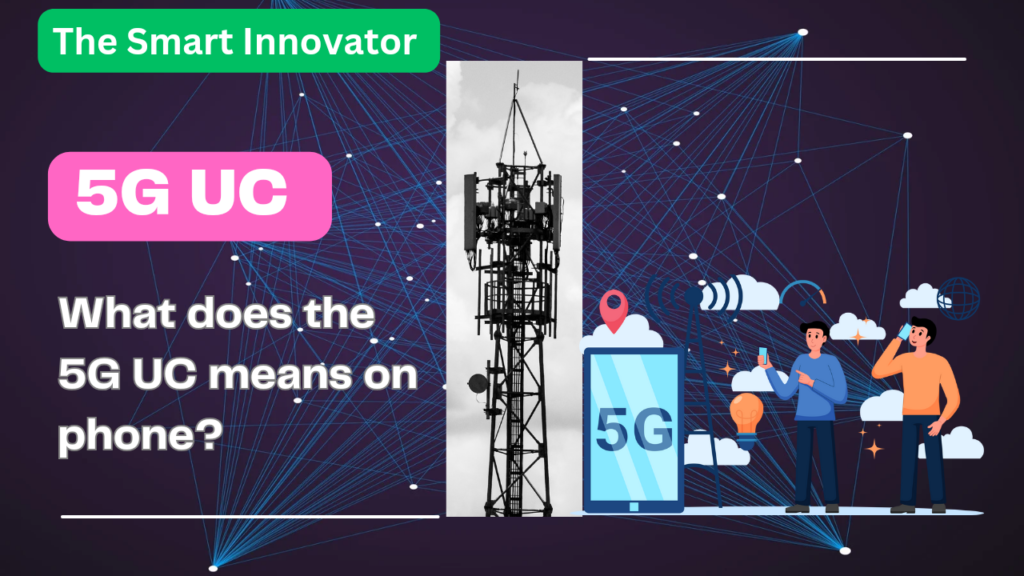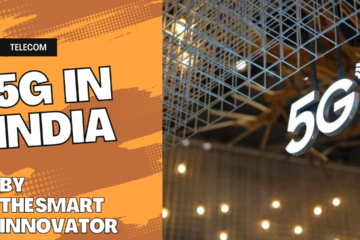5G UC : What does the 5G UC means on phone?
In the era of digital transformation, the demand for seamless and efficient communication is higher than ever. Enter 5G Unified Communications (UC), the next-generation solution that promises to revolutionize the way we connect, collaborate, and communicate. In this article, we will delve into the world of 5G UC, exploring its benefits, applications, and the transformative impact it holds for businesses and individuals alike.

What is 5G UC?
5G UC refers to 5G Ultra Capacity, which is an advanced networking technology that takes advantage of the high bandwidth and low latency of 5G networks to deliver enhanced connectivity and data transfer capabilities. It enables faster speeds, increased capacity, and improved performance, allowing for seamless streaming, real-time communication, and support for emerging technologies such as virtual reality, augmented reality, and Internet of Things (IoT) applications.
It is a key component in unlocking the full potential of 5G networks and transforming the way we connect, communicate, and interact in the digital world.
What is 5G UC data speed?
5G UC, or 5G Ultra Capacity, is a type of 5G that uses mid-band and millimeter wave (mmWave) spectrum to deliver speeds that can be up to 10 Gbps. This is significantly faster than 4G LTE, which typically maxes out at around 100 Mbps.
The actual data speed you experience on 5G UC will depend on a number of factors, including the spectrum band being used, the number of users connected to the network, and the distance from the cell tower. If you are in a crowded area or far from a cell tower, you may experience slower speeds.
Here is a table that summarizes the theoretical data speeds:
| Spectrum | Theoretical Data Speed |
|---|---|
| Mid-band | Up to 1 Gbps |
| mmWave | Up to 10 Gbps |
As you can see, It can deliver speeds that are up to 10 times faster than 4G LTE. However, it is important to note that these are theoretical speeds, and actual speeds may be lower in real-world conditions.
Here are some examples of real-world data speeds:
- In a test conducted by T-Mobile, It achieved a peak download speed of 3.7 Gbps.
- In a test conducted by Ookla, It achieved an average download speed of 1.2 Gbps.
These results show that It is capable of delivering very high data speeds. However, it is important to note that these speeds are not always available. In fact, in most cases, you will see speeds that are much lower than the theoretical maximum.
Overall, It is a very fast 5G technology. However, it is important to remember that actual speeds may vary depending on a number of factors.
Applications
Here are some of the things you can do with 5G UC:
- Stream 4K video without buffering
- Download large files in seconds
- Play online games with no lag
- Video chat with crystal-clear quality
If you are looking for the fastest and most reliable 5G experience, then 5G UC is the way to go. However, it is important to note that It is not yet widely available. As of March 2023, it is only available in select areas in the United States.
The Power of 5G UC
This combines the power of 5G network technology with the versatility of unified communications platforms. This dynamic combination brings forth a multitude of advantages, including:
- Lightning-Fast Speeds: This leverages the ultra-fast speeds of 5G networks, enabling real-time communication with minimal latency. This means faster file transfers, high-quality video conferencing, and seamless collaboration across geographically dispersed teams.
- Enhanced Reliability: With its robust network infrastructure and low latency, this ensures reliable and uninterrupted communication. Businesses can rely on stable connections, reducing downtime and ensuring smooth operations.
- Multi-Modal Communication: This integrates various communication channels, including voice, video, messaging, and collaboration tools, into a unified platform. This allows users to seamlessly switch between different modes of communication based on their preferences and needs.
Transforming Industries with 5G UC
The applications of 5G UC span across industries, transforming the way organizations operate and communicate. Some notable use cases include:
- Remote Work and Telecommuting: This enables seamless remote collaboration, empowering remote workers to connect, collaborate, and engage in virtual meetings as if they were in the same room. This fosters productivity, enhances teamwork, and enables flexible work arrangements.
- Healthcare: This revolutionizes healthcare by enabling real-time telemedicine consultations, remote patient monitoring, and instant access to critical patient data. This ensures faster response times, improved healthcare outcomes, and enhanced patient experiences.
- Manufacturing and Industrial Applications: This facilitates real-time communication and collaboration between machines, robots, and humans in smart factories. It enables remote monitoring, predictive maintenance, and efficient coordination, optimizing production processes and driving operational excellence.
Embracing the Future with 5G UC
As businesses and individuals embrace the power of 5G UC, several key benefits emerge:
- Seamless Collaboration: This breaks down communication barriers, allowing teams to collaborate seamlessly across distances. Real-time interactions, high-quality video conferencing, and instant messaging empower teams to work together more efficiently.
- Increased Productivity: With faster speeds and reliable connections, This enables employees to access critical information and collaborate in real-time, boosting productivity and driving innovation.
- Enhanced Customer Experiences: This empowers businesses to provide superior customer experiences through real-time support, personalized interactions, and efficient communication channels.
What is the difference between 5G and 5guc?
| Feature | 5G | 5G UC (Ultra Capacity) |
|---|---|---|
| Definition | Fifth-generation cellular network technology delivering faster speeds, lower latency, and enhanced capacity. | T-Mobile’s implementation of 5G that leverages their unique spectrum resources and advanced network technologies for even higher capacity and performance. |
| Frequency Bands | Operates on a wide range of frequency bands, including sub-6 GHz and mmWave. | Combines low-band, mid-band, and mmWave spectrum for a more robust and powerful 5G experience. |
| Performance | Faster data transfer, improved network efficiency, supports applications like HD video streaming, real-time gaming, AR, and IoT devices. | Even faster download and upload speeds, improved network reliability, and support for bandwidth-intensive applications. |
| Implementation | Standard 5G technology deployed by various carriers. | T-Mobile’s specific implementation of 5G technology. |
| Spectrum | Low-band, mid-band, and high-band | Mid-band and mmWave |
| Speed | Up to 100 times faster than 4G LTE | Up to 100 times faster than 4G LTE |
| Coverage | Wider coverage than 5GUC | Narrower coverage than 5G |
| Availability | More widely available than 5GUC | Available in select areas |
5G UC Vs 5G E
5G UC focuses on the network’s capacity and performance capabilities. It refers to the ability of 5G networks to handle significantly larger amounts of data, support a higher number of connected devices, and deliver faster speeds compared to previous generations of networks. The “UC” in 5G UC highlights the increased capacity and enhanced capabilities that 5G networks offer, enabling seamless connectivity. It supporting advanced applications like virtual reality, augmented reality, and IoT.
On the other hand, 5G E (Evolution) is a term used by some mobile carriers to denote an advanced stage of their 4G LTE network, which incorporates certain 5G technologies and features. However, it’s important to note that 5G E is not true 5G but rather an enhancement to the existing 4G LTE network. The “E” in 5G E stands for Evolution, signifying the evolution of the network towards 5G-like capabilities, such as increased speeds and reduced latency, within the constraints of the existing infrastructure.
It represents the full-fledged 5G network with its ultra capacity and advanced capabilities, while 5G E refers to an enhanced version of 4G LTE with certain 5G technologies integrated. It’s important to understand the distinction between the two terms when evaluating the capabilities and performance of a mobile network.
What is 5G UC Ultra Capacity?
5G UC (Ultra Capacity) refers to the advanced capability of 5G networks to handle a significantly higher volume of data. It support a larger number of connected devices compared to previous generations of mobile networks. It is one of the key features of 5G technology that sets it apart from 4G and other earlier networks.
It’s ultra capacity empowers the network to handle large data volumes. It support a multitude of connected devices, paving the way for transformative applications and services that rely on high-speed, low-latency, and reliable connectivity.
What does 5G UC mean on T-Mobile?
5G UC stands for 5G Ultra Capacity. It is T-Mobile’s fastest 5G network, and it uses mid-band and millimeter wave (mmWave) spectrum to deliver speeds that can be up to 100 times faster than 4G LTE. 5G UC is available in over 200 million people across the U.S., and it is constantly expanding.
The term “5G UC” is used by T-Mobile to differentiate its fastest 5G network from its slower Extended Range 5G network. Extended Range 5G uses low-band spectrum, which offers better coverage but slower speeds. It uses mid-band and mmWave spectrum, which offers faster speeds but shorter range.
So, if you see the “5G UC” icon on your phone, it means that you are connected to T-Mobile’s fastest 5G network. This means that you can expect to experience speeds that are up to 100 times faster than 4G LTE. You can also expect to have a more reliable connection, even in crowded areas.
How do I turn off 5G UC?
To turn off 5G UC on your device, you can follow these general steps:
- Open the Settings menu on your device. This can usually be accessed through the app drawer or by swiping down from the top of the screen and tapping the gear icon.
- Look for the “Network & Internet” or “Connections” option and tap on it.
- Within the network settings, locate and tap on the “Mobile Networks” or “Cellular Networks” option.
- Depending on your device and the version of Android, you may see different options related to mobile networks. Look for an option related to 5G or 5G UC. It might be labeled as “Preferred network type” or “Network mode.”
- Tap on the 5G or 5G UC option and select a different network mode. This could be “LTE/3G/2G” or “4G/3G/2G” to disable 5G UC and use the previous generation network technology.
- Save the changes and exit the settings.
Conclusion
5G UC is set to redefine the way we communicate and collaborate in a digitally connected world. With lightning-fast speeds, enhanced reliability, and multi-modal communication. It holds the potential to transform industries and empower businesses and individuals alike. Embrace the power of 5G UC and unlock a new era of seamless, efficient, and transformative communication.
Follow The Smart Innovator for such interesting articles about telecom and latest trends that improve our communication.
Frequently Asked Question
5G UC can deliver speeds that are up to 10 Gbps, which is significantly faster than 5G (low-band) or 5G (mid-band).
Yes, 5G UC is actually 5G. It is a type of 5G that uses mid-band and millimeter wave (mmWave) spectrum to deliver speeds that can be up to 100 times faster than 4G LTE.
5G UC can deliver speeds that are up to 10 Gbps.







0 Comments